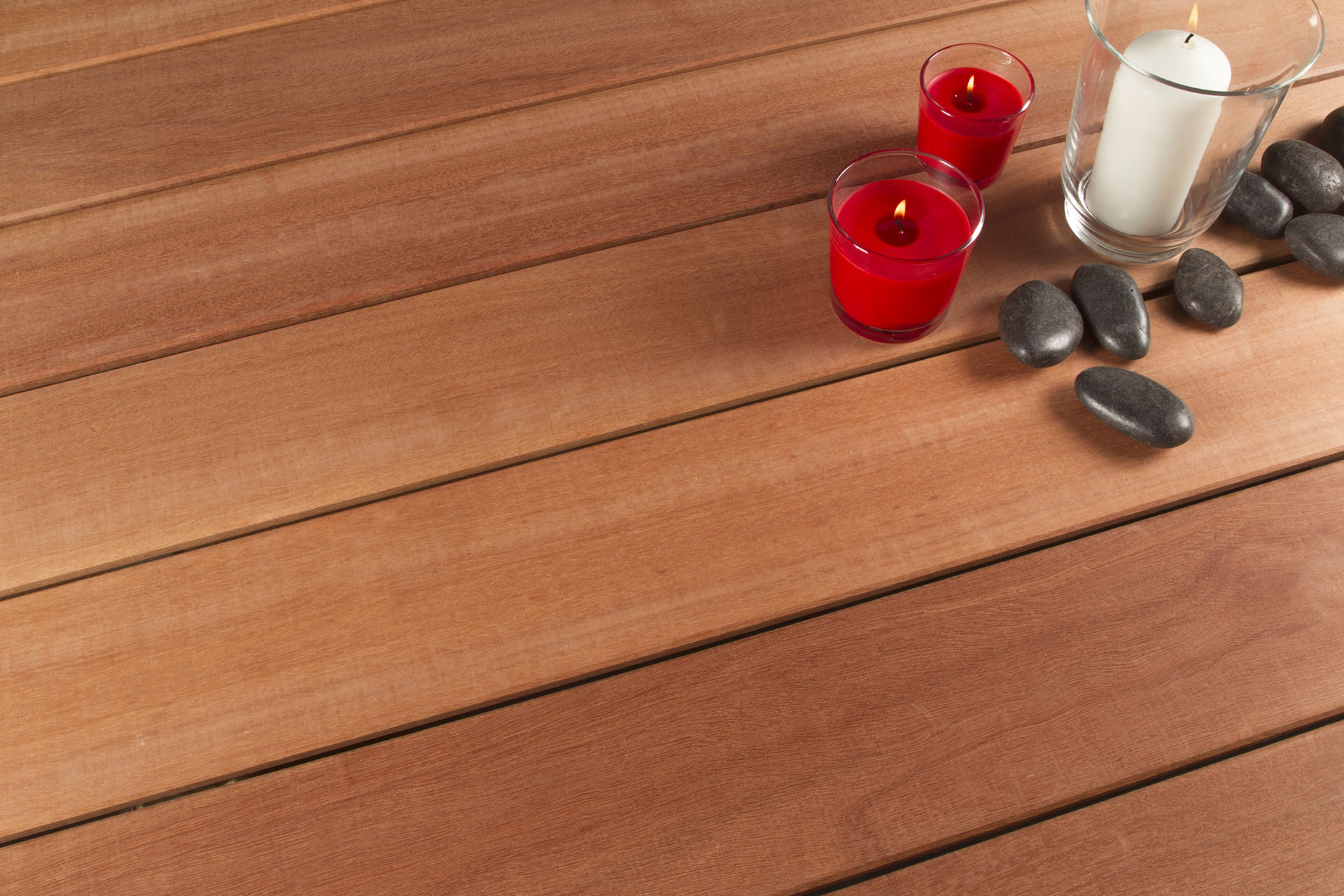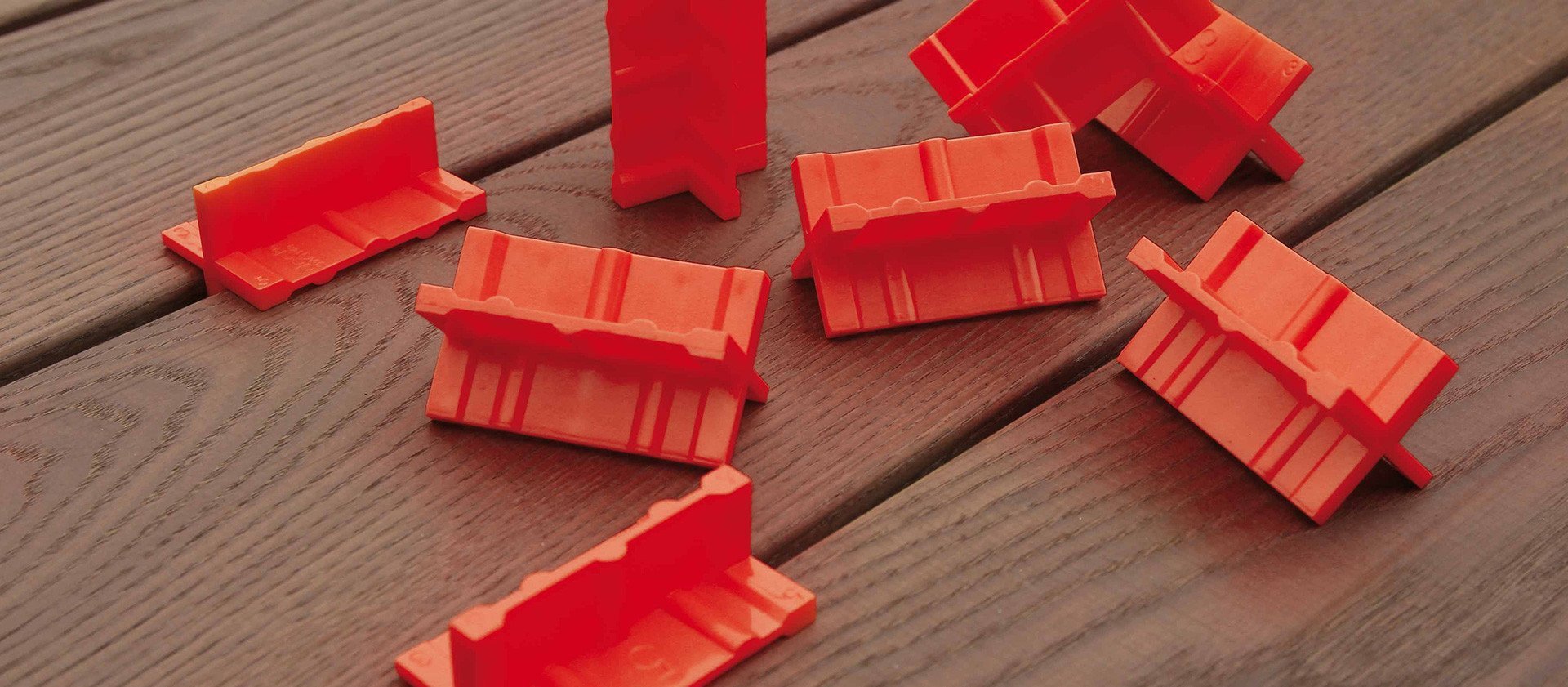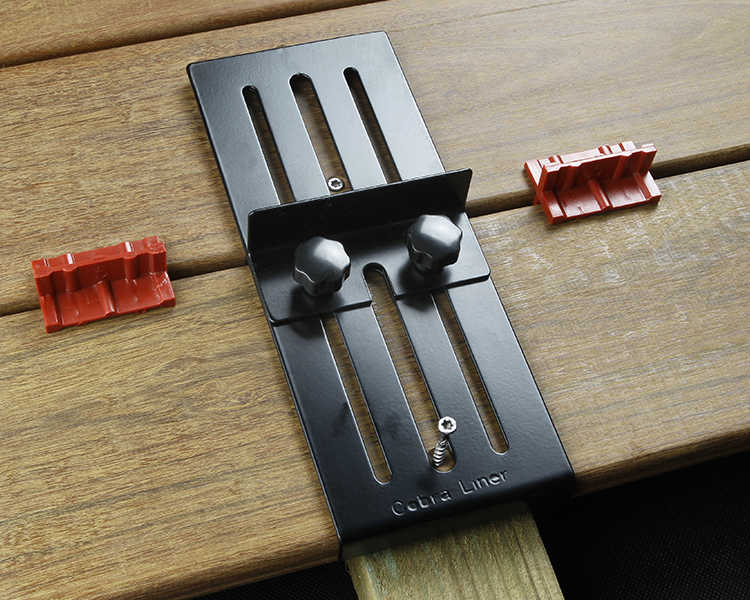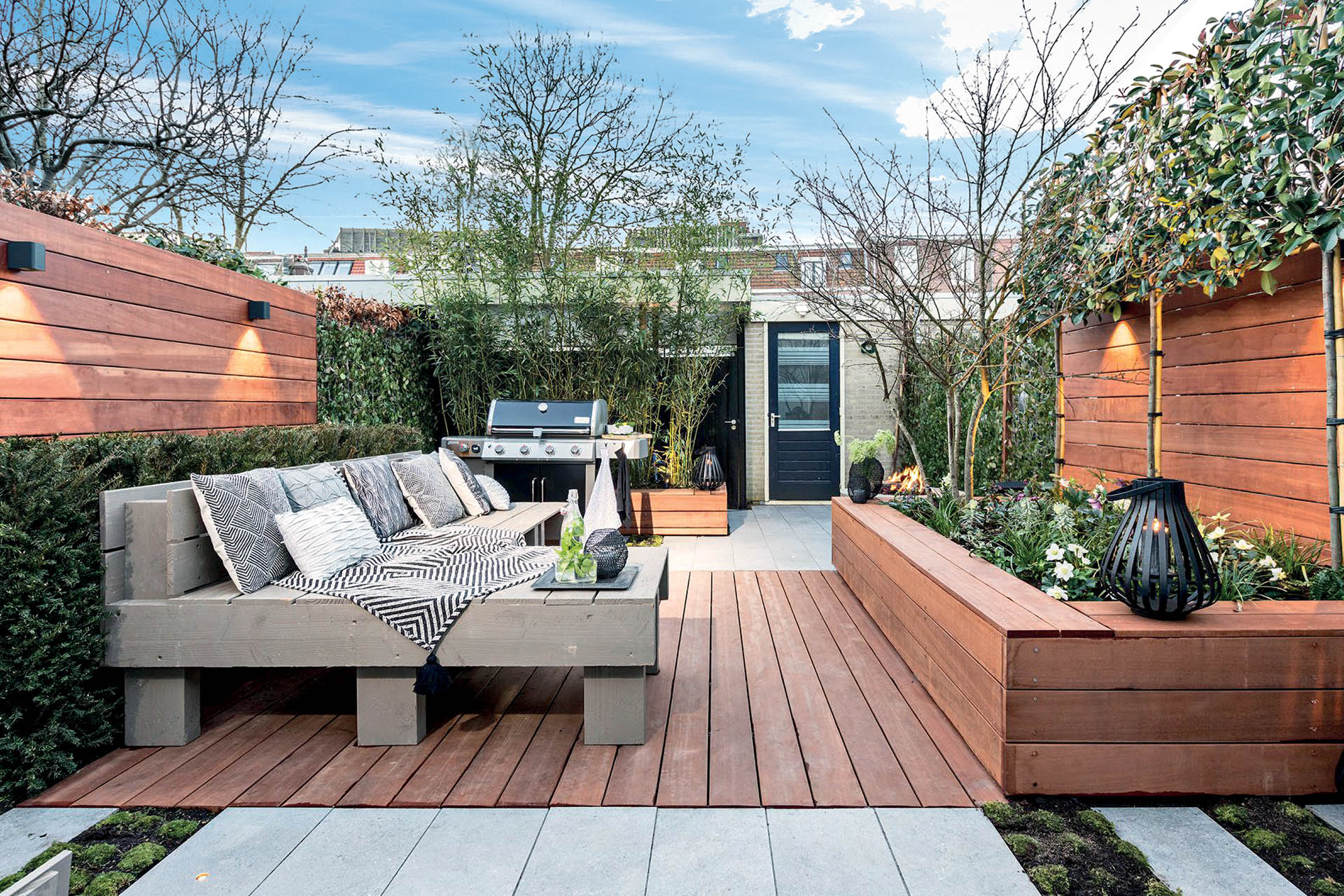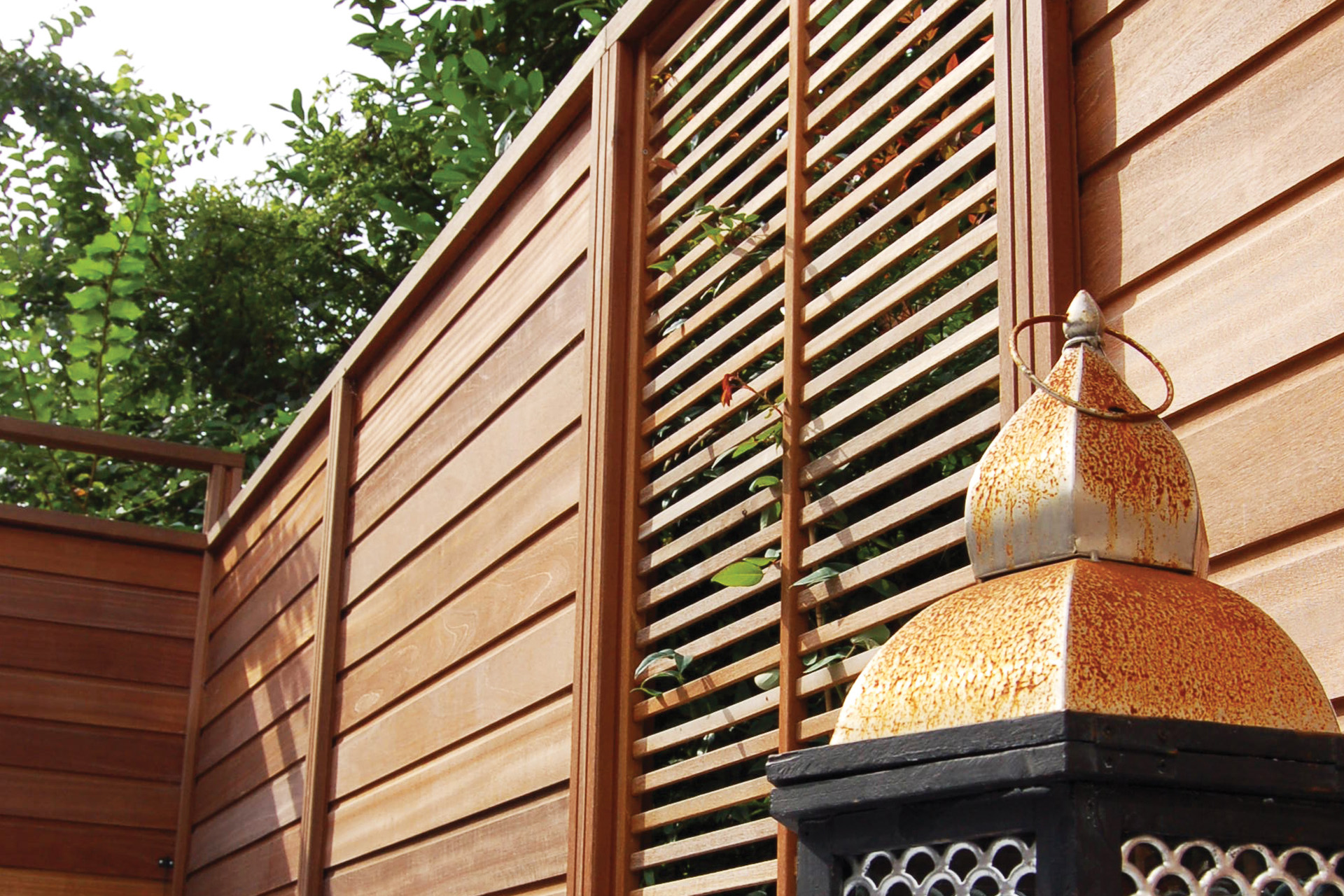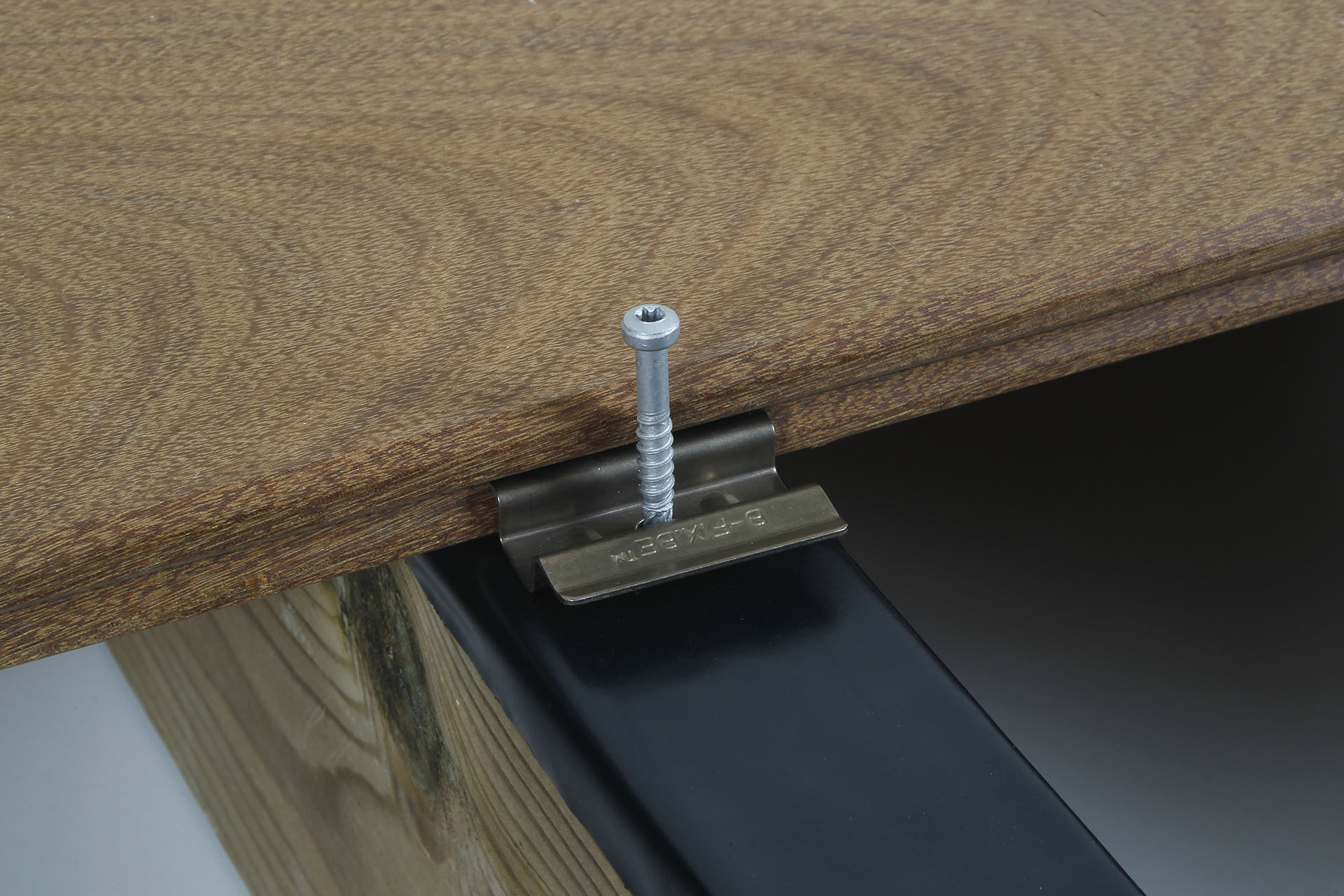- Home
- Deck Boards
- AFRIKULU decking
AFRIKULU decking
A fine-grained and harmonious board
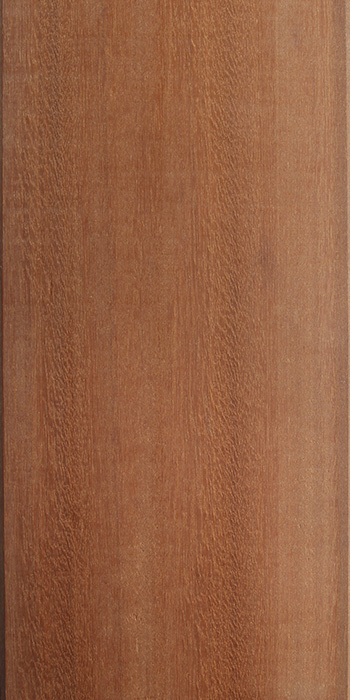

- Grooved profile for concealed B-fix fasteners
- Very sustainable
- Little counter grain
- Brown - light red
A warm coloured deck board
Mukulungu, renamed Afrikulu in the FelixWood range, is a tropical wood from West Africa, and, more precisely, from the Congo Basin.
All our wood comes from sustainably managed, FSC-certified forests.
Mukulungu is an interesting alternative to Ipe. It is fine grained, slightly less dense than Ipe, but its stability is rather good and of almost identical durability. It is distinguished by its reddish-brown colour with darker veining that lightens over time to become, like other exotic species, silver-grey. Its reddish-brown colour is sometimes punctuated by the presence of counter-grain.
Its TS/RS (Tangential to Radial Shrinkage) ratio is 1.1, like Ipe (1.3). This translates into good stability after being set-up, better than cumaru, massaranduba and other alternative species to Ipe. In addition, our Afrikulu deck boards are all dried in artificial dryers to an average 16% humidity. The boards offered are groove-edged to allow fastening with Bfix clips without visible screws.
With a hardness similar to that of Bangkirai, but superior to Garapa, Afrikulu boards resist punching well.
Finally, Mukulungu is one of the most durable exotic wood species. It is termite and lignivorous fungi resistant. However, we always advise to avoid water traps and favour ventilation of the boards on the underside with use of underside ventilation shims of the Airspacer type.
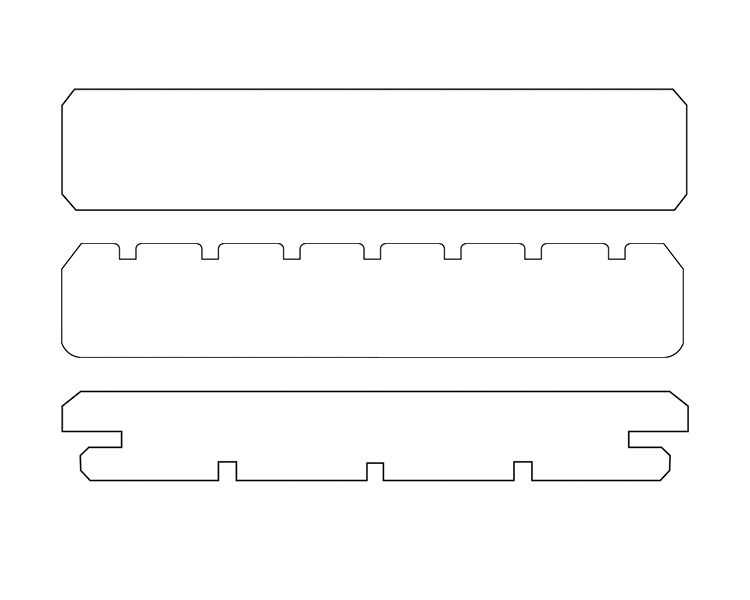
- Smooth : 21x145, 25x145 mm
- Grooved : 21x145, 25x145 mm
- B-fix profile : 21x145 mm
Characteristics
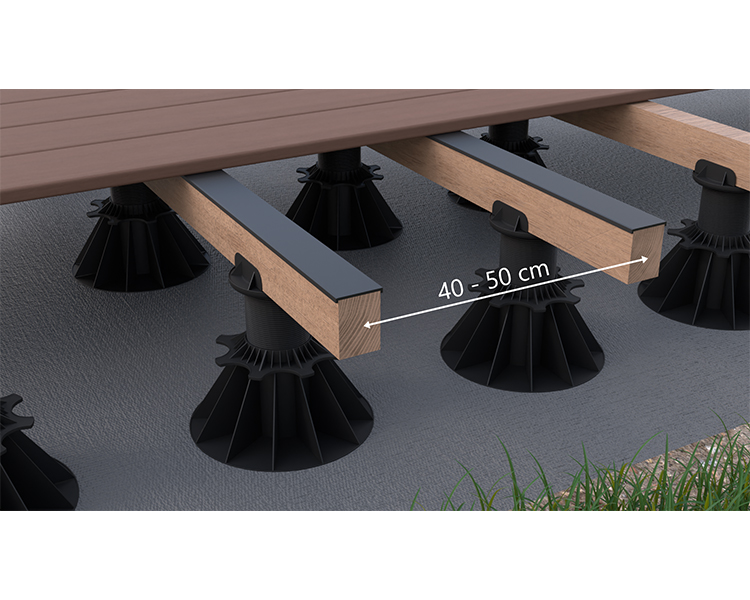
Installation of the joists
Plan a centre-to-centre distance of 40 and 50cm between joists. This distance is specified for each of our profiles in the attached table.
The joists must be laid with a slope of 2% in the longitudinal direction of the boards to allow rainwater to run off. This 2% slope must be strictly observed!
Water must also be able to flow under the structure. The joists must be supported on rubber pedestals or supports.
Protect your joists and increase their lifespan: Use the Bitudeck bitumen strip to cover the joists and prevent water infiltration at the fastening points.
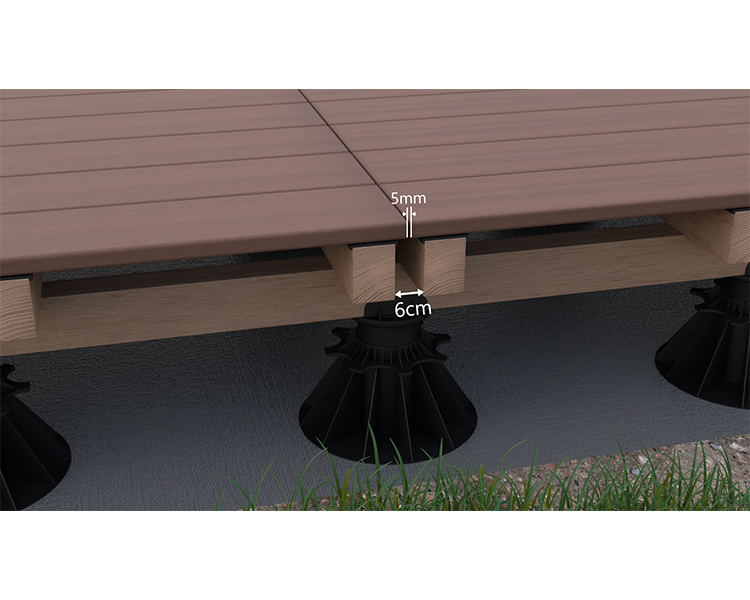
Double joisted and cross joisted
Double joisting allows for water to flow between board extremities. Distance between board extremities must be between 4 and 6 mm and distance between the end of the boards and the joist must be between 20 and 30 mm.
Cross joisting
For a faster and longer lasting installation, we recommend cross joisting.
A layer of joists is fixed perpendicularly on a first layer of rafters. The flatness of the deck is easier and quicker to adjust, and ventilation is improved.
In the case of loose and poorly stabilised soil, we recommend the use of galvanised steel foundation screws to ensure effective and durable anchoring of your deck.
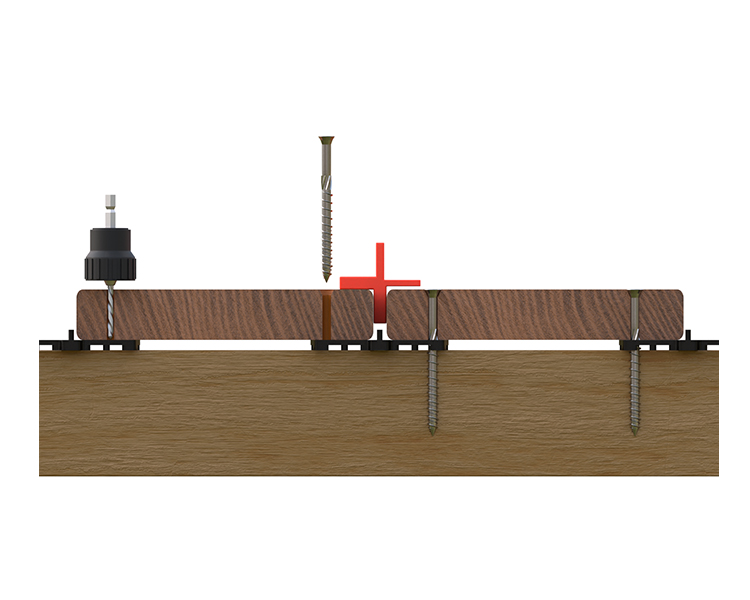
The boards are screwed to the wooden joists.
Spacing between the decking boards should be kept between 5 and 7mm (taking into account a wood moisture content of 14-16% at delivery). Use board spacers during installation.
| Humidity of the boards | from12 to 17% | from 18 to 22% | > 23% at H > PSF |
| Thickness of the spacer shim | 7 or 6 mm | 5 or 4 mm | 3 or 2 mm |
To avoid water being trapped between the boards and the joists, we recommend the use of a ventilation wedge of the Airspacer type. Air circulation under the boards prevents any moisture settling.
Ensure good ventilation of the boards
Never completely close the skirts of the deck to "let the air circulate". Leave a ventilation space of 2 cm between floor and skirting. The minimum space between the decking boards and the ground should be 4 cm to 10 cm for damp floors.
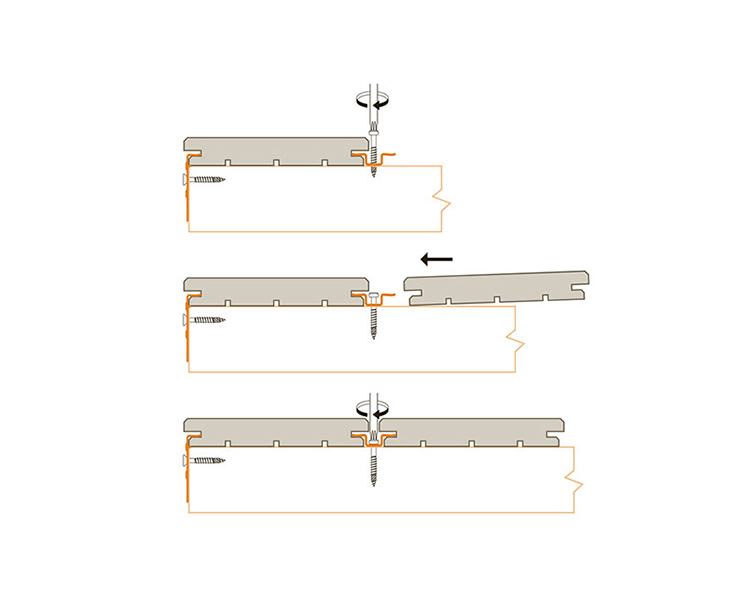
Fastening the boards with Bfix clips
Please take into account the centre-to-centre distance between joists (40 cm). 2 fasteners must be used for the board joints.
Step 1
There are suitable start / end fasteners to fasten the first board to the edge. Place the first board and then insert the fastener. Drill the screw hole with a 4 mm drill bit in the wooden joists.
Step 2
Screw in the screw about halfway down, or up to groove height.
Under no circumstances should the screw be screwed in completely, otherwise the next board will not be inserted correctly. Do not "knock". Insert the next board as close as possible to the first board. It is important for this board to also be precisely aligned.
Step 3
Firmly screw in the fastener. The lower part of the fastener must always be accurately adjusted to the joist for a perfect fit so that it may provide a forced fit.
For aluminium joists, we recommend using 2 EPDM splicing tapes between the fasteners to avoid screw breakage. Use screws suitable for aluminium joists. Wood screws are only intended for wooden joists.
All FelixWood woods comply with the European Union Forest Law Enforcement, Governance and Trade Regulation (EU FLEGT). We scrupulously check the certificates of origin of the forest plots. All stages of production, from tree to shipment of the wood are traced and identified. We ensure continuous audit of all our suppliers in accordance with EU FLEGT. As such, 100% of our timber is of legal origin.
But beyond that, we are significantly increasing the proportion of our FSC-certified wood every year.
The Forest Stewardship Council (FSC) is a global non-profit organisation. It promotes socially beneficial and prosperous but sustainable management of the world's forests. The FSC was established in 1993 to help consumers and companies identify products from well-managed forests. The organisation sets certification standards that provide credible verification for people buying wood and wood products.
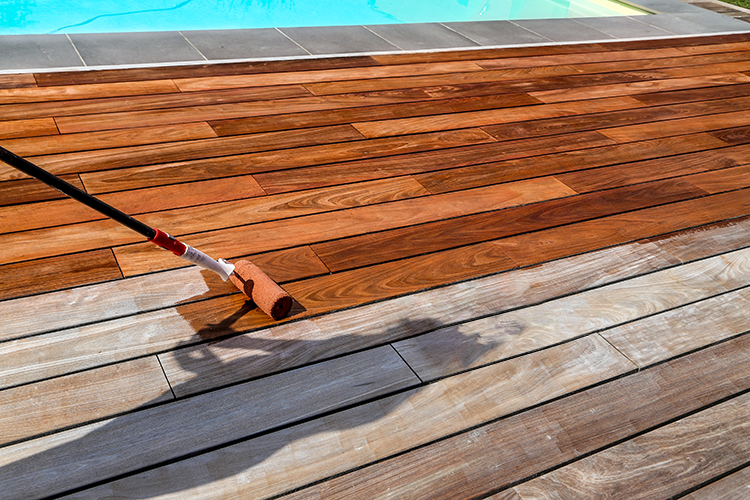
Maintenance of AFRIKULU boards
Wood turns grey and the surface cracks due to the weather. We recommend oiling the surface, thereby reducing these effects. Only use non water-based non film-forming oils.
Caution: check in advance whether the oil is suitable for the type of wood used. Application of the oil is necessary at least once a year or even several times, depending on location and weather conditions.
After the winter, clean your decking against moss, which represents an increased slippery risk. Never clean with a high-pressure jet.
CAUTION : The appearance of black spots is quite common. These spots, grey or black, spike shaped, are often mistakenly confused with mould. This is a fine metal particles oxidation reaction on the surface of the wood. They can come from a variety of sources (lawn fertilizer, plaster and cement, metal dust from cutting work, etc.). This phenomenon can occur suddenly, after moisture deposit on the deck (dew, rain, etc.).
If this happens, see the information sheet: iron oxide / oxalic acid reaction.
